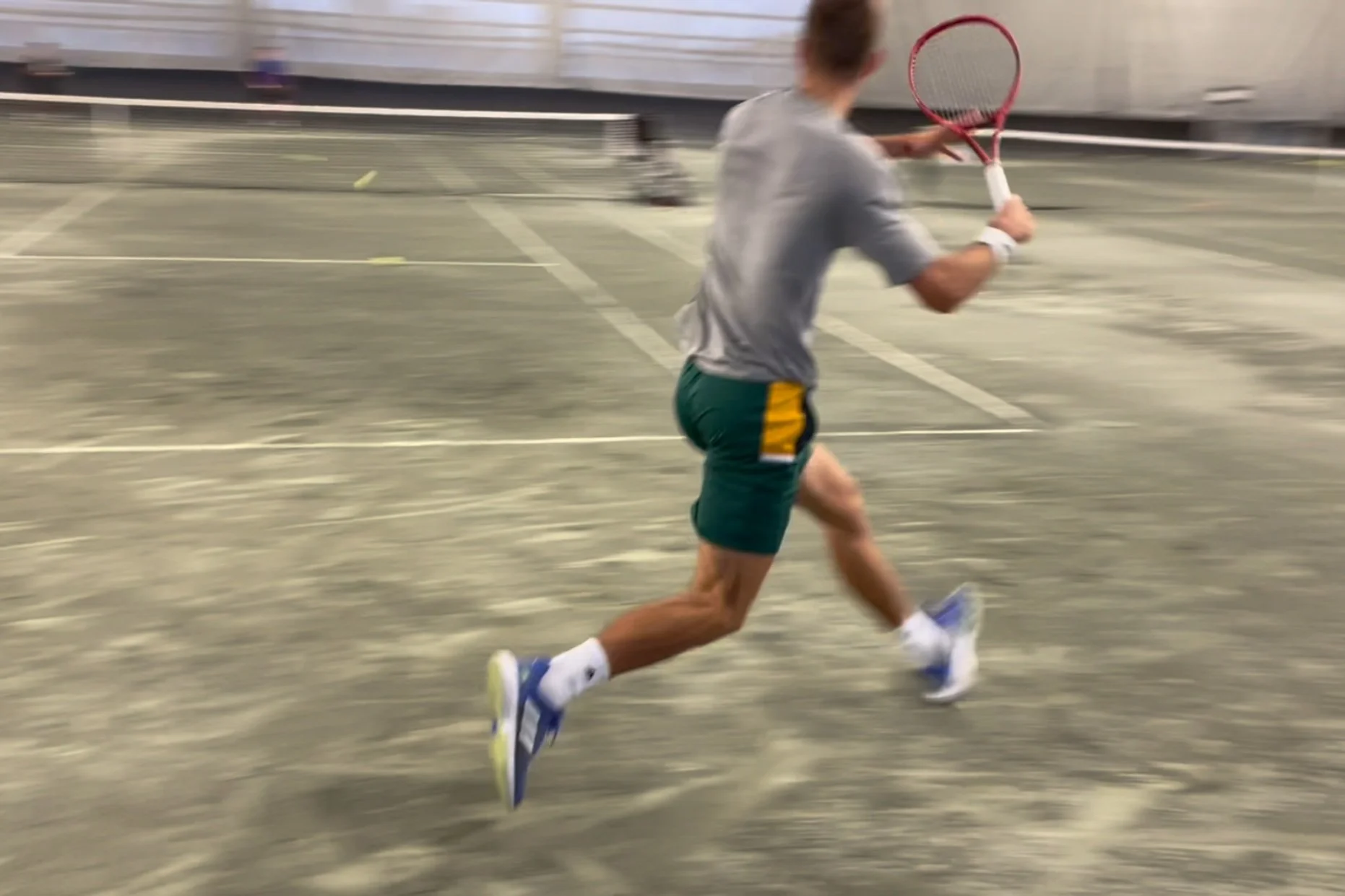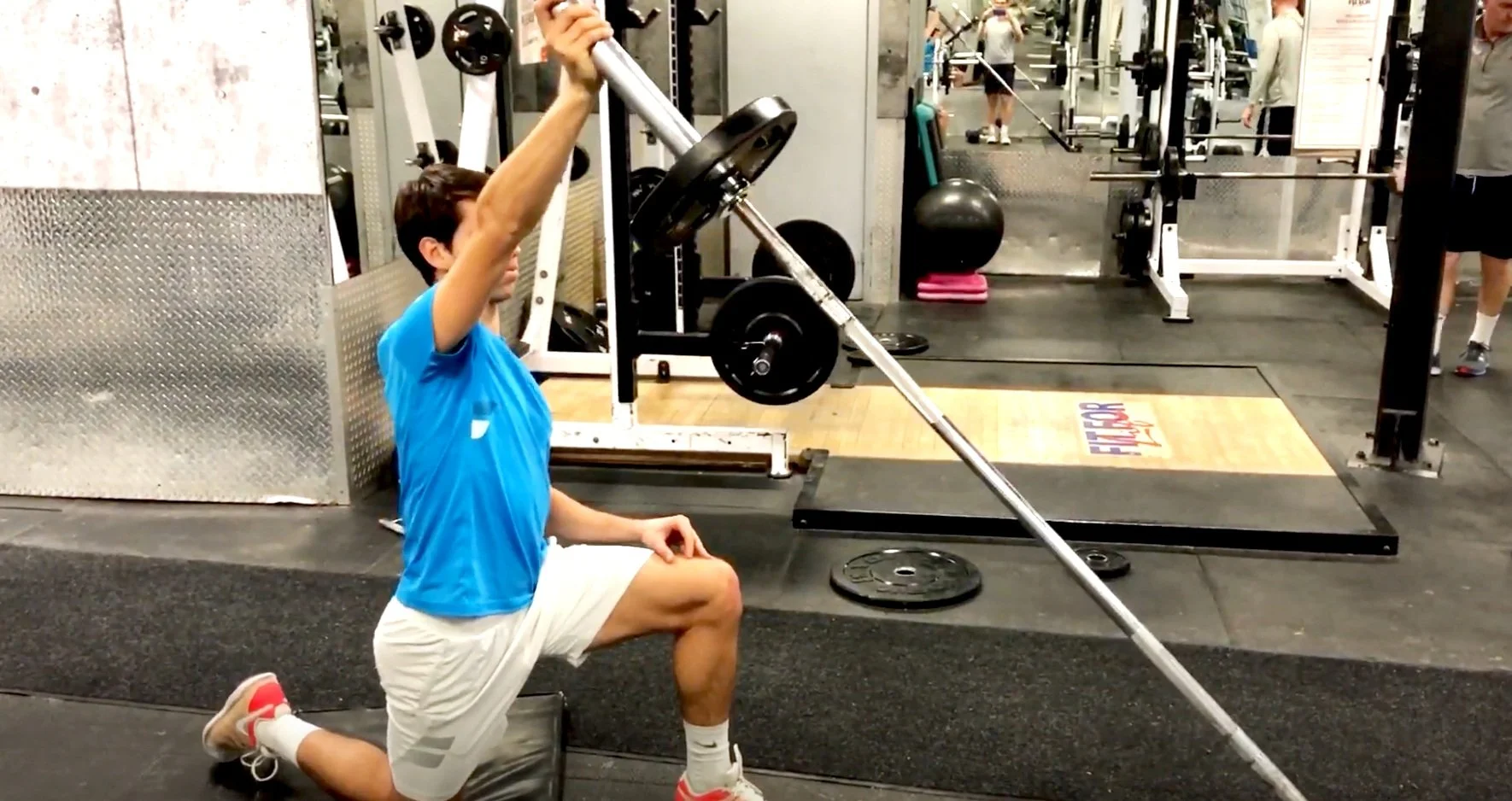Many in tennis associate shoulder health with resistance band exercises. Listen to coaches and trainers talk about shoulder strength or injury prevention with their players and you’ll surely hear things like “are you using your bands daily?” or “make sure to do ‘x’ or ‘y’ band exercise”. But do band exercises work in the manner that they’re spoken about?
I’d like to offer my take on the matter and suggest 2 other strength training methods - light weight and moderate/heavy strength exercises.
Here’s the thing, it’s kind of a mess out there, isn’t it? From the latest & greatest exercises to outdated information - and promises of quick results - the tennis fitness world can be a confusing place.
The truth is, there’s no one best exercise or one best program or one best [insert training fad of the week].
Instead, what we are left with are principles. Scientific principles to be exact. Like specificity and progressive overload and adaptation. So if a program is built on this type of foundation, improvements are almost ensured. If not...well, the reverse is probably true.
Don’t believe me? Consider for a moment what my clientele looks like:
In last week’s post, we took a closer look at the force-velocity relationship and it’s underlying science. Recall that when force requirements are high, velocity outputs will be low - and vice versa. This has important implications because of the different movement requirements on a tennis court along with the methods used to improve relevant athletic qualities. Look at the figure below - it’s a theoretical look at where certain movements and strokes etc. lie on the force-velocity curve (this is an adapted representation based on science and my anecdotal experience). Even some of these movements will have different force-velocity requirements at the muscular level - when decelerating for a wide ball for instance, the initial deceleration step will have higher forces acting on the lower-body then the last step just before planting (because we’re trying to stop from a relatively fast movement speed).
This is the final part of a series of posts on change-of-direction (COD) in tennis…for now anyway. While we’ve touched on a number of key aspects of COD, researchers are only beginning to uncover the complexities of this athletic quality. This week’s post will briefly highlight why many in the tennis world believe that strength training doesn’t have a place when it comes to improving COD ability - and how the landscape has changed; and why straight line sprinting, although initially proposed as a key factor in COD ability, doesn’t really correlate after all. We’ll finish up with some practical examples of how purposeful strength training means can improve each phase of COD - the deceleration, planting and propulsive phases.
Unless you’ve been living under a rock, you’ve likely seen countless videos on social media of athletes lifting big weights. And it’s not just athletes from sports like american football, baseball or hockey. Many athletes across various sports - like long distance running, swimming, volleyball - are lifting weights. We're not referring to light dumbbells but rather heavy loads and big lifts. The question is, why? What’s the rationale behind this type of training? Should tennis players learn from these sports?
I’ve briefly spoken about the importance of strength training for tennis. Some factors include the prevention of injury and increases in serve speed. In this post, we’ll dive deeper into the details of maximum strength training and it's relevance to the elite tennis player. Specifically, we’ll outline how max strength development can impact movement characteristics - including explosiveness, first step ability and acceleration.
There’s no question the shoulder takes a beating in tennis. I mean, players use it on every shot. Whether that’s to create lots of torque to hit a big forehand or to stabilize the shoulder when punching a volley...the shoulder has many functions and roles. But perhaps the biggest toll on the shoulder occurs in a movement you wouldn’t normally consider...the deceleration phase (aka the follow-through phase) of the serve. This is the moment after impact where the posterior muscles of the shoulder act in an eccentric manner to essentially stop the head of the humerus from being dislodged from the glenoid fossa (aka think arm dislocating from shoulder...that wouldn’t be fun). Ellenbecker & Kovacs (2008) call the deceleration phase “the most violent of the tennis serve”. That’s a pretty big statement, and probably something that needs to be considered in the training of the tennis shoulder. But why exactly is this phase of the serve so critical? What type of strength is necessary? And what kind of exercises can tennis players incorporate into their program to optimize the serve keep the shoulder healthy? We’ll explore all of these points in this article, so read on.
How do different athletic qualities fit into the program of a tennis player? This is a complex question but one that deserves an answer. With information being so readily accessible these days, there are countless videos of players doing all kinds of things off the tennis court. But let me ask you this: just because a top 100 or 50 player is doing X or Y, does it mean it’s effective? Is it driven by some underlying scientific basis? Often times, it’s not. It’s a regurgitation of someone else’s training or a drill that was once seen before. If you’re a player, and someone is telling you to do squats on a stability ball…or ladder drills to develop agility and change-of-direction (COD) ability...seek alternatives as these are merely gimmicks that have little transfer to the aforementioned performance qualities.
In a previous post, I outlined the physical demands during tennis play and briefly explained how these demands can be addressed through strength training. Many coaches believe that once you assess the demands, programming begins. Well…almost. Before we can begin putting a plan together, we must determine the specific needs of your athlete. This is generally done through various means, including - but not limited to - testing, questionnaires, conversation, observation, tracking and so on. This article will focus on physical testing as it relates to tennis play.
A few weeks back I wrote an article about strength training for tennis. More specifically, I wrote that physical training for tennis should stop focusing on “fancy drills” that may appear useful on the outside. Among other qualities (not the focus of this article), physical training for tennis should include a properly planned and executed strength training protocol. In this post, I’m going to outline the mechanical demands of tennis - this will hopefully provide a better understanding as to why strength training is important for tennis. And a brief application of strength training will be linked to each tennis demand to provide further context.
Last week I wrote about some key lessons I learned from a weightlifting coach. One of those key lessons was the importance of general training for athletes. Although general training is vital for any athlete, developing athletes may get the greatest benefit from this type of work. When I talk about general training, I am referring to non sport specific movements. For tennis players, this means movements that are non tennis related. John Kiely, sport scientist and elite coach, refers to general training, especially in the early years of development, as movement diversity. In this article, we’ll explore the current dogma in physical preparation for tennis, why early specialization is an almost must and the theory behind general training.
I’m obviously a big tennis fan. I don’t just follow the big events - although don’t get me wrong I do enjoy watching the top guy’s compete - but I also follow junior tennis and the lower ranks of the ATP, specifically the Canadians. This past weekend I watched the end of a Davis Cup match between Richard Gasquet of France (ATP World number 10) and Philip Bester of Canada (ATP World number 160). Although Bester played well, he inevitably lost in straight sets to the formidable Gasquet. What struck me though, was not the match itself but what Bester had to say in his post-match interview:












